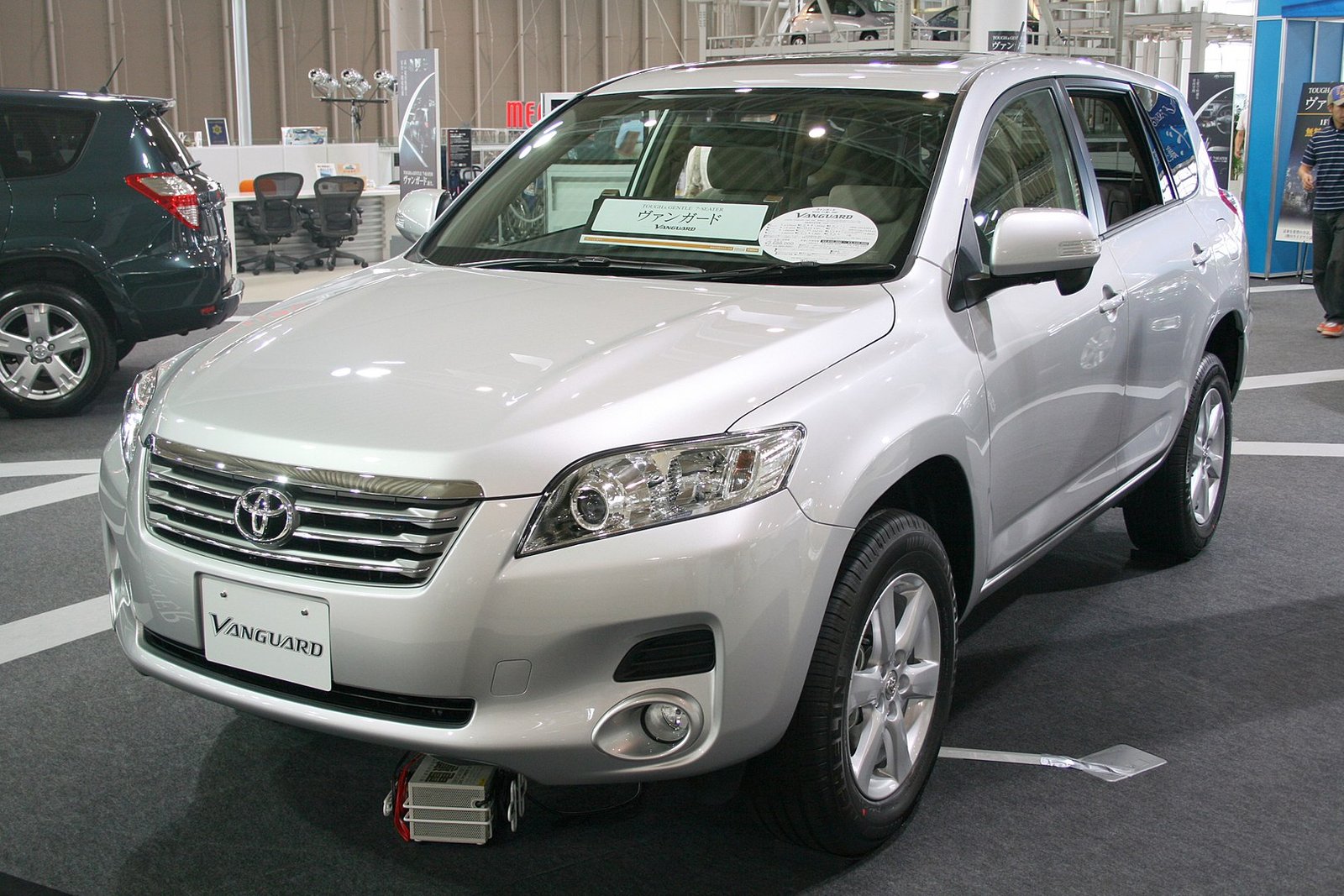

Why Toyota Said Goodbye to the Vanguard
When the Toyota Vanguard first rolled off the assembly line in 2007, it promised a blend of spaciousness, rugged performance, and refined comfort, swiftly capturing the attention of SUV enthusiasts around the globe. Positioned neatly between the smaller RAV4 and the larger Highlander, the Vanguard initially appealed to families and adventure seekers who desired more room and versatility without committing to the bulkier SUVs in the Toyota lineup.
However, after several successful years, Toyota surprised many by quietly discontinuing the Vanguard in 2013, leading to speculation and questions among loyal customers and automotive critics alike. So why exactly did Toyota discontinue the Vanguard? In this article, we’ll comprehensively explore the reasons behind Toyota’s decision, from market dynamics to strategic repositioning, consumer preferences, and the brand’s evolving priorities.
Table of Contents
ToggleUnderstanding the Toyota Vanguard
To fully grasp Toyota’s decision, it’s crucial to revisit what made the Vanguard appealing in the first place. Debuting primarily for the Japanese market and later making its way into other global regions—including East Africa—the Toyota Vanguard was built upon the popular RAV4 platform. It featured a longer wheelbase, seating capacity for up to seven passengers, and a more powerful engine range, giving it a substantial market advantage in terms of practicality and performance.
Key highlights of the Vanguard included:
- Engine Performance: Available primarily with a 2.4-liter four-cylinder or a robust 3.5-liter V6 engine, the Vanguard combined solid performance with acceptable fuel economy for its time.
- Interior Space: Enhanced interior dimensions and flexible seating configurations made it particularly attractive to families.
- Safety Features: Toyota equipped the Vanguard with impressive safety standards, including Vehicle Stability Control (VSC), multiple airbags, and advanced braking systems.
- Comfort and Technology: Offering superior interior refinement, the Vanguard also came with sophisticated infotainment systems and comfort-oriented cabin materials.
Despite these appealing features, the Vanguard faced increasing competition, not only externally from rival automakers but internally from Toyota’s own lineup.
Key Reasons Toyota Discontinued the Vanguard
1. Overlap with the Toyota RAV4

One of the most prominent reasons behind Toyota’s decision to phase out the Vanguard was its overlap with the wildly popular Toyota RAV4. Though initially introduced as a more spacious alternative, the line between the Vanguard and RAV4 gradually blurred. Both vehicles shared many components, making differentiation challenging.
While the RAV4 underwent continuous evolution to better suit global tastes, adopting more efficient engines and hybrid technologies, the Vanguard remained more traditional in its engineering. Consumers often struggled to justify choosing a Vanguard over the better-established and globally popular RAV4, especially since the Vanguard commanded a slightly higher price point without significantly more features or performance gains.
Ultimately, Toyota recognized the redundancy and market confusion that the simultaneous presence of these two similar vehicles created, leading to the decision to simplify their SUV offerings.
2. Changing Consumer Preferences
Consumer preferences in the automotive industry have seen significant shifts in recent years. During the Vanguard’s lifecycle, the market saw an increasing demand for compact crossovers, smaller SUVs, and eco-friendly hybrids. The Vanguard, characterized by its relatively larger footprint and less fuel-efficient engines, began to lose appeal among an increasingly eco-conscious consumer base.
Globally, consumers started leaning toward vehicles that offered better fuel economy, compact maneuverability for urban commuting, and innovative hybrid technology. The Vanguard’s relatively larger and thirstier engines put it at a disadvantage against competitors, which increasingly offered hybrid or fuel-efficient turbocharged alternatives. Toyota’s continued investment in hybrid technology, especially in vehicles like the RAV4 Hybrid, signaled the inevitable end for a model less aligned with evolving environmental regulations and consumer expectations.
3. Strategic Market Positioning

Toyota’s decision to end the Vanguard was also closely linked to strategic repositioning within the global SUV market. Rather than competing internally among overlapping segments, Toyota began streamlining their offerings, ensuring each vehicle had clearly defined market positioning. By removing the Vanguard from their lineup, Toyota aimed to sharpen the focus of its core SUVs—RAV4, Harrier, Highlander, and Land Cruiser—each targeting distinctly different market segments.
For example, the RAV4 was positioned as a practical compact SUV, appealing to urban families and young professionals, whereas the larger Highlander was firmly positioned for bigger families seeking more luxurious, spacious accommodations. The Vanguard found itself caught awkwardly in the middle—no longer adequately differentiated or strategically necessary within Toyota’s clearer and more intentional market segmentation.
4. Cost and Profitability Factors
Maintaining multiple vehicles with similar offerings is not just a branding issue—it’s also a financial one. Production costs, supply chain complexities, and marketing expenditures rise significantly when automakers maintain closely competing models. Toyota faced pressure to streamline manufacturing processes and reduce overheads, especially during periods of global economic uncertainty.
Although the Vanguard had experienced reasonable sales early on, its profitability began to decline as sales volumes dropped. Toyota, known for efficient manufacturing and strategic production management, recognized the long-term financial risk of continuing with a model that had diminishing returns. By eliminating the Vanguard, Toyota aimed to optimize resources toward more profitable and strategically viable products.
Consumer and Market Reactions
The discontinuation of the Toyota Vanguard sparked mixed reactions from both consumers and market observers. In regions like Kenya, where the Vanguard had found considerable popularity as a reliable used import, many consumers initially expressed disappointment, concerned about parts availability and long-term support.
However, this anxiety quickly faded as consumers recognized Toyota’s robust global network of dealerships and aftermarket support. Interestingly, the end of production temporarily boosted resale values due to perceived scarcity and the robust reliability of the Vanguard model. Globally, however, the response was muted, as the move was widely perceived as sensible, streamlining Toyota’s SUV range for clarity and efficiency.
Toyota’s Replacement Strategy
To mitigate the absence left by the Vanguard, Toyota strategically expanded and upgraded its existing lineup of SUVs. Primarily, this involved enhancing the RAV4, which received significant updates in design, technology, and especially powertrain efficiency, culminating in the highly successful RAV4 Hybrid variant.
Additionally, Toyota introduced newer versions of the Harrier, Highlander, and other mid-size SUVs to address the space and comfort that former Vanguard owners sought. Toyota also aggressively expanded its hybrid and electric offerings, signaling a firm commitment to eco-friendly alternatives. This strategic replacement approach effectively addressed consumer needs once met by the Vanguard, offering more contemporary, efficient, and globally relevant choices.
Lessons Learned and Industry Impact
Toyota’s decision to retire the Vanguard provided several strategic insights for the automotive industry. One critical lesson was the importance of clearly defined market segmentation to avoid consumer confusion and unnecessary internal competition. Toyota recognized that careful market positioning was essential in a competitive global SUV market.
Competitors closely watched Toyota’s strategy, learning from its successful consolidation approach. Many automakers subsequently streamlined their own vehicle lineups to focus resources on fewer, more clearly positioned models. The industry also acknowledged the growing importance of hybrid and electric alternatives, hastening a shift away from larger, less efficient internal combustion engine SUVs.
Conclusion
In retrospect, Toyota’s decision to discontinue the Vanguard was a calculated move influenced by several compelling reasons—market overlap with the RAV4, changing consumer preferences toward smaller and more fuel-efficient vehicles, strategic repositioning, and overall financial considerations. While its departure initially disappointed loyalists, Toyota’s replacement strategy effectively filled the gap with newer, technologically advanced, and more eco-friendly alternatives.
The Vanguard’s legacy remains a testament to Toyota’s commitment to innovation and adaptability. For SUV enthusiasts, the Vanguard remains a memorable model reflecting a specific automotive era—one where midsize SUVs dominated markets worldwide. Although it is no longer in production, the Vanguard continues to offer reliable, practical, and spacious transportation to thousands of satisfied owners around the globe.
Related posts


The Heart of Your Car: A Deep Dive into Transmissions


Buying a Used Toyota Prado J120 in Kenya


The Ultimate Family SUV? A Review of the Toyota Prado J150









